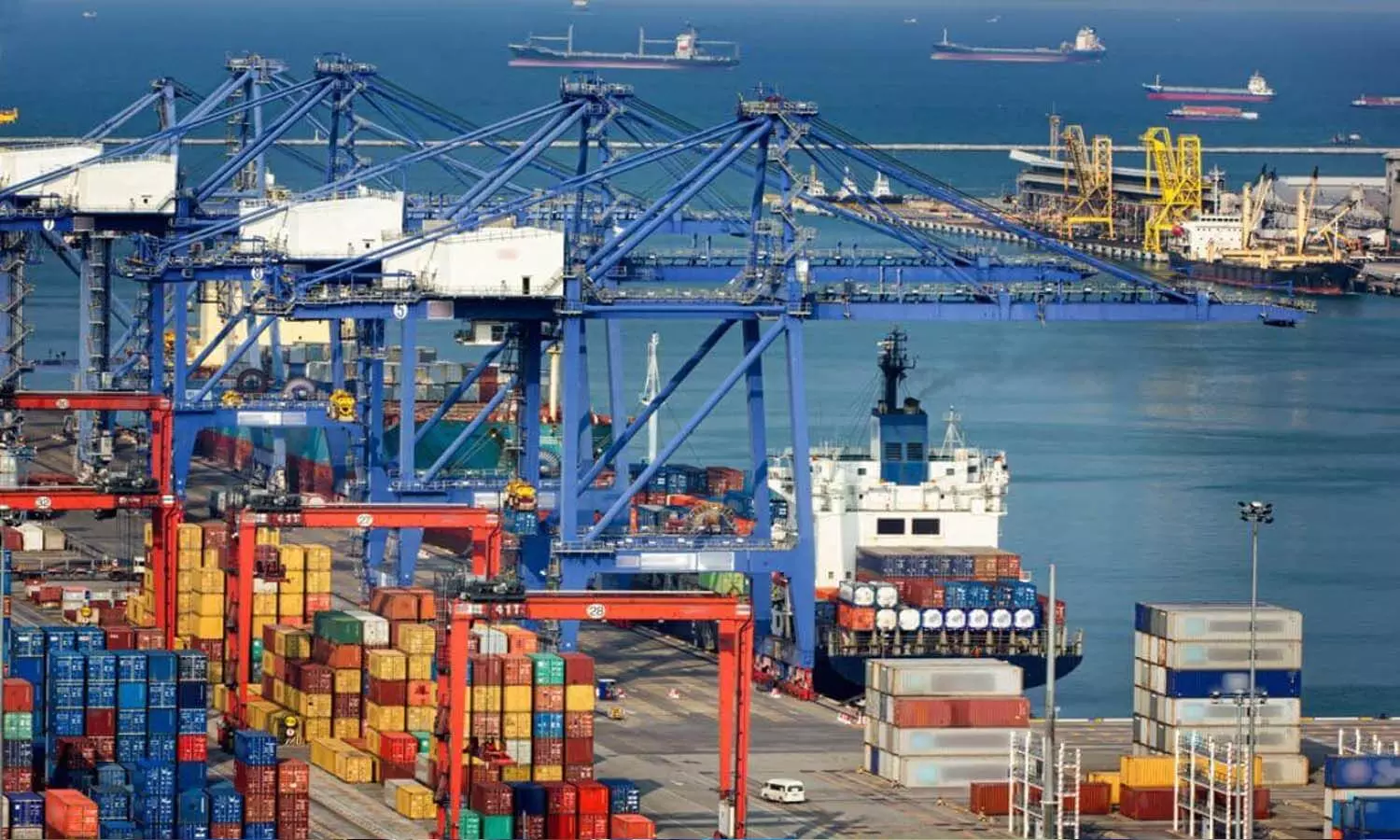A Policy Oversight with Far-reaching Consequences
Maritime News India: The recently presented Union Budget for 2025 has generated optimism within India’s maritime sector, with substantial allocations for shipbuilding, port modernization, and inland waterways. However, one glaring oversight threatens to undermine this positive trajectory: the neglect of India’s minor ports. Despite their significant role in regional trade, fishing, and local economies, these vital ports have been largely ignored in favor of major ports, shipbuilding clusters, and inland waterways, leaving them vulnerable to decline.
India’s coastline stretches over 7,500 kilometers, hosting 12 major ports and approximately 200 non-major ports, often referred to as minor ports. These ports, which support industries ranging from agriculture to tourism, contribute significantly to India’s maritime landscape. While the Ministry of Ports, Shipping & Waterways (MoPSW) governs the major ports, the responsibility for minor ports lies with state maritime boards and local governments. Notably, only around 65 minor ports actively handle cargo, while the remaining serve primarily for fishing and ferry services.
Union Budget 2025: Disproportionate Resource Allocation
The Union Budget for 2025 allocated ₹25,000 crore to the Maritime Development Fund (MDF), ₹6,100 crore for port modernization, and introduced several incentives for shipbuilding. While these provisions support major ports, there has been minimal mention of minor ports in the budget, signaling a policy imbalance. Despite their importance in local economies, the minor ports were left out of the direct financial allocations, raising concerns about their long-term sustainability.
Why Minor Ports Matter
Minor ports are integral to regional trade, handling nearly 45% of India’s cargo traffic. They support small-scale exports, fisheries, agriculture, and local industries, which are critical to the economic fabric of coastal communities. However, compared to major ports, minor ports suffer from a lack of modern infrastructure, adequate funding, and a comprehensive policy framework. The consequences of this neglect are far-reaching, with local businesses, fishing communities, and regional logistics companies facing increasing challenges.
Impact of Budget Neglect on Stakeholders
-
Local Businesses and Coastal Economies
- Impact: The focus on major ports risks sidelining the minor ports, leaving local industries dependent on them at a disadvantage. Higher transportation costs, increased lead times, and infrastructure bottlenecks may disrupt local supply chains.
- Threat: Private players may shift operations to larger ports, contributing to economic stagnation in minor port-dependent regions.
-
Fishing Communities and Small-Scale Traders
- Impact: Fishing harbors and associated infrastructure—such as cold storage, markets, and processing units—are often underdeveloped.
- Threat: Without access to modern logistics and storage facilities, these communities may suffer from wastage, price fluctuations, and livelihood insecurity.
-
State Maritime Boards and Local Governments
- Impact: The lack of financial empowerment and autonomy for state maritime boards hampers their ability to modernize minor ports and introduce necessary reforms.
- Threat: Inadequate funding and bureaucratic red tape leave state maritime boards unable to upgrade port infrastructure, placing them at a disadvantage compared to corporate-controlled major ports.
-
Logistics and Shipping Companies
- Impact: The underinvestment in minor ports limits their cargo handling capacity, pushing logistics companies to rely on major ports.
- Threat: This results in congestion, delays, and higher operational costs, which adversely impact businesses that rely on efficient maritime transport.
-
Private Investors and Entrepreneurs
- Impact: With the Union Budget providing tax breaks and incentives for major ports, there is little incentive for private investors to develop or modernize minor ports.
- Threat: Without robust public-private partnership (PPP) models, minor ports will remain underdeveloped and unable to attract necessary private capital.
Budget Allocation Expectations for Minor Ports
Given the central role that minor ports play in India’s coastal economy, it is essential to allocate a portion of the Union Budget 2025 to their development. Based on international best practices, a dedicated Minor Ports Development Fund (MPDF) could be established, with specific allocations targeting key areas of improvement:
- Infrastructure Modernization (₹5,000 crore – 30%): Modernize cargo handling facilities, improve fishing harbor infrastructure, and introduce cold storage and processing units.
- Sustainable Development (₹4,000 crore – 25%): Promote eco-friendly practices, such as renewable energy, waste management, and pollution control in minor ports.
- Smart Port Technology (₹3,000 crore – 20%): Invest in IoT, automation, and data analytics to improve operational efficiency and reduce turnaround times.
- Community Engagement and Livelihood Support (₹2,250 crore – 15%): Support fishing communities, local traders, and coastal economies through grants for local businesses and skill development programs.
- Policy Reforms and Capacity Building (₹1,750 crore – 10%): Strengthen the regulatory framework, incentivize private investment, and enhance the capacity of state maritime boards.
This comprehensive budget allocation for minor ports would not only enhance their infrastructure but also stimulate regional economic growth, promote sustainable development, and improve the livelihoods of coastal communities.
International Case Studies: Successful Budget Allocations for Minor Ports
Several countries have successfully invested in their minor ports, driving economic growth while supporting local communities. These international models offer valuable lessons for India:
-
Port of Oakland, USA – Investment in Local Workforce
- Budget Focus: Job training programs, small business grants, and community engagement.
- Outcome: Creation of a skilled local workforce and increased public acceptance of port development.
- India’s Takeaway: Funds allocated for skill development and local business support near minor ports can reduce dependency on migrant labor and create sustainable livelihoods.
-
Port of Bellingham, USA – Community-Driven Development
- Budget Focus: Stakeholder engagement, participatory governance, and local entrepreneurship.
- Outcome: Enhanced transparency, local business growth, and greater community support for port projects.
- India’s Takeaway: Establishing community advisory boards and earmarking funds for local enterprises can create synergies and boost regional economies.
-
Port of Antwerp, Belgium – Green Infrastructure
- Budget Focus: Green energy projects, pollution reduction, and sustainable logistics.
- Outcome: Improved environmental outcomes and international recognition for sustainable practices.
- India’s Takeaway: Investment in green infrastructure at minor ports can ensure long-term environmental sustainability and attract global investors.
-
Port of Rotterdam, Netherlands – Innovation in Port Operations
- Budget Focus: Smart technologies, digital infrastructure, and port automation.
- Outcome: Increased operational efficiency and global competitiveness.
- India’s Takeaway: Allocating funds for digital transformation at minor ports can improve their efficiency, reduce operational costs, and enhance global competitiveness.
The Way Forward for MoPSW
To ensure inclusive growth in India’s maritime sector, the MoPSW must:
- Establish a Minor Ports Development Fund (MPDF) to modernize infrastructure and improve the competitiveness of minor ports.
- Integrate minor ports into the National Maritime Policy with clear investment roadmaps and targeted funding.
- Incentivize private investment through tax breaks, grants, and PPP models.
- Empower state maritime boards with financial autonomy, technical training, and capacity-building programs.
- Align minor ports with India’s Blue Economy Mission to promote sustainable fisheries, coastal tourism, and environmental protection.
While the Union Budget 2025 has taken bold steps in modernizing major ports and promoting shipbuilding, the exclusion of minor ports from direct financial allocations poses a significant risk to regional economic stability. Ignoring minor ports exacerbates inequalities between coastal regions and undermines India’s long-term maritime strategy. For a truly developed and inclusive India, all stakeholders, especially those relying on minor ports, must be prioritized in national policy.
To achieve a ‘Viksit Bharat,’ India must address the needs of its minor ports, recognizing their critical contribution to the coastal economy and local livelihoods. A balanced approach that supports both major and minor ports is essential for a sustainable and equitable maritime future.




